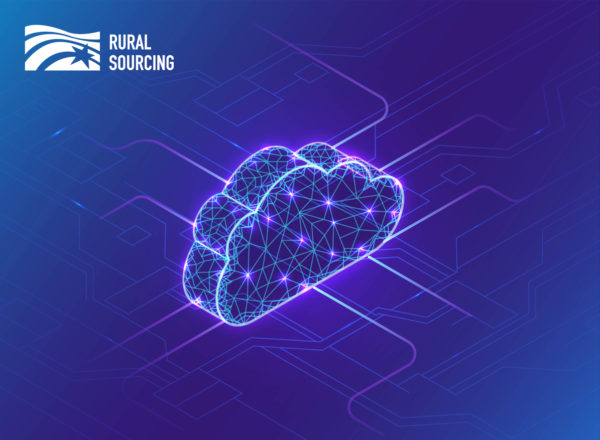“Never let the fear of striking out keep you from playing the game.” Babe Ruth’s famous quote reminds me of the advice I often give to clients who are considering a move to the Cloud. Some organizations let their fear of change guide future plans, despite the Cloud’s many benefits which include cost savings, higher velocity and more opportunity for innovation. That’s why I’ve assembled the five most common concerns, and why they shouldn’t stop you from moving to the Cloud.
1. Security
There are numerous solutions to address this concern, but first and foremost it’s important to note that the public Cloud has had many years to mature and become battle tested; companies like Amazon and Google have spent a lot of money tackling security issues head-on. In fact, it’s more secure than your private server, which tends to be more vulnerable due to things like missed software updates, network compromise, or social exploits. However, if you’re still wary of keeping your company’s sensitive data on the Cloud, you can keep key data on a private server and move the less sensitive data to a serverless Cloud.
2. Legacy application issues
Clients often think they have an app or process that they think can’t move to the Cloud, whether that’s because it’s built on special architecture or maybe tied to a specific piece of hardware in their center. And while it may be true that your business is tied to a legacy application now, switching to the Cloud can provide you with a level of independence you couldn’t dream of with private servers.
3. Organizational barriers
Having a diverse team with different viewpoints and areas of expertise is a wonderful thing, but when it comes to being ready to switch to the Cloud, others on your team may not be as ready as you are. Consider this the perfect opportunity to be your project’s evangelist. In the Cloud, you can try all the new projects you’ve dreamed up for less than the cost of doing three of them in a serverless environment. I’ve found that the difference between a growing business and a stagnant one is whether you’re willing to embrace change.
4. Data handling concerns
Sometimes companies are bound by data use agreements or regulatory concerns that make hosting their data on a public or hybrid cloud much more difficult. Maybe that data is jointly owned with business partners, or was collected under a restrictive data use agreement. Often, the data itself has been aggregated over years or decades from all sorts of sources, and you’re just not sure what you have to do to untangle all these concerns. There’s almost always an answer involving the correct security or private cloud integration. Additionally, you can find well-informed attorneys to help you understand what your responsibilities are if you don’t have that expertise in-house.
I understand that moving to the Cloud can be an intimidating process, especially if you or someone on your team has any of these concerns. However, the rewards that accompany a shift to the Cloud can help your organization save money, move your business forward, and make life a lot easier for your developers. Listen to Babe Ruth – don’t let fear stop you from reaping the benefits of moving to the Cloud.
About the Author:
Originally a medical researcher, Hoke Currie has been leading data analytics consulting and crossover software development teams since 1994 for clients including the US Army, CMS, Sodexo, DuPont, the World Bank, UPS, the Bill & Melinda Gates Foundation, and the International Monetary Fund. Formerly a managing partner at GraySail for more than sixteen years, he is currently a Principal Consultant at Sparq, and the Java practice lead in the Augusta Development Center. His specialties include Java, Agile development, Cloud adoption and migration, and large scale data analytics / machine learning.

Snowflake Summit 2025 Announcements
Snowflake Summit 2025’s latest announcements made it clear: the path to genuine AI-driven impact hinges on frictionless access to data, the ability to act on it with clarity, and absolute confidence in its protection. Learn more about how they're making that happen for customers in this article.

How ChatPRD Helps Build Better Stories (and a Stronger Team)
When user stories are vague, it slows down delivery, trust, and momentum. This article by Senior Product Strategy Consultant Traci Metzger shows how she used a lightweight, AI-guided system (ChatPRD) to write clearer, developer-ready requirements that actually accelerated execution.

QA in the Age of AI: The Rise of AI-Powered Quality Intelligence
As organizations push code to production faster, respond rapidly to new customer needs and build adaptive systems, the expectations on quality have changed. It's no longer enough to simply catch bugs at the end of the cycle. We’re entering an era where quality engineering must evolve into quality intelligence and organizations adopting quality intelligence practices are reporting measurable gains across key delivery metrics. Learn more in this article by Principal Engineer Jarius Hayes.

Operational Efficiency in the AI Era: What Matters and What Works
Ever wonder how leading teams are cutting costs without cutting corners? Hint: it starts with AI. In this article by Principal Delivery Manager Kabir Chugh, learn how AI is powering smarter ops, faster deployments, and measurable savings across industries.
